Disclaimer: This blog post contains affiliate links. If you make a purchase through these links, I may earn a small commission at no additional cost to you. Learn More. Thank you for supporting our garden community.
Vegetable Garden Watering Tips for Healthy Plants
Water is one of the most important parts of your vegetable garden, but do you know the best garden watering practices? Understanding these tips and techniques of watering can make a world of difference to the health of your vegetables. Here’s our ultimate guide to smart garden watering, ensuring your vegetables thrive.
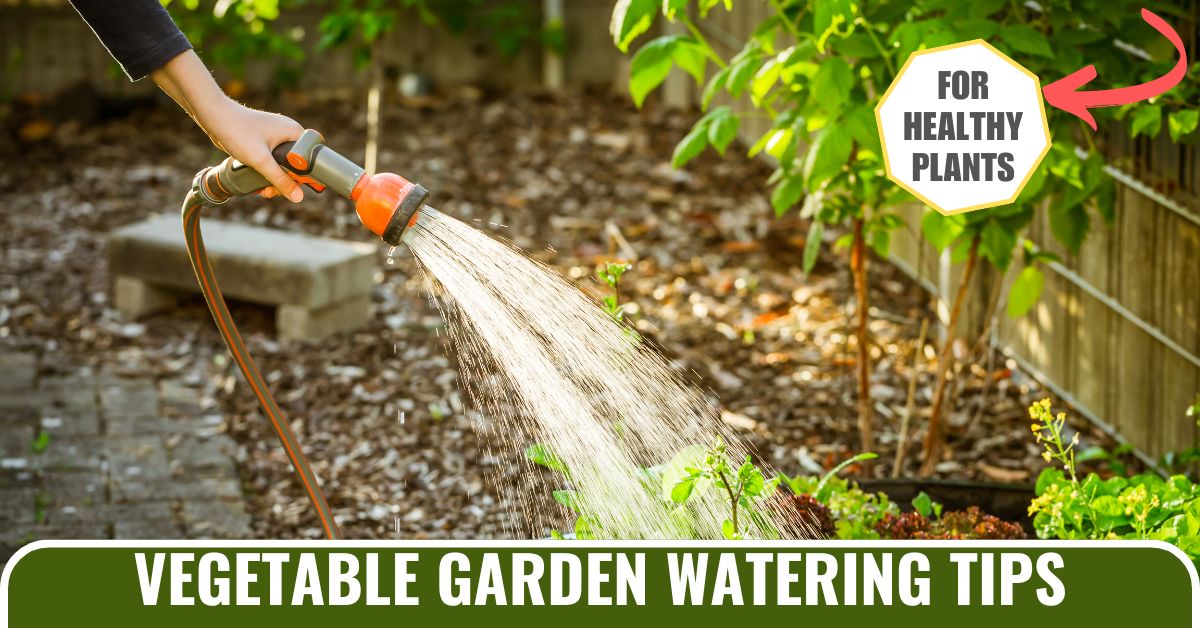
Vegetable Garden Watering Tips
Watering is not the same for everyone.
Firstly, we all live in different growing zones, with different climates, daylight hours, precipitation, etc. But even for those of us in the same growing zone, garden watering is not the same during the summer as it is in the fall.
That being said, we can’t just make a few strict rules and call it a day. It is more complex than that.
So the best thing that you can do for your vegetable garden is develop a strategy that works for it. Learn how to observe and understand your garden. This way, you will always know what your plants need and when they need it.
However, there are some tips and techniques that every gardener should know about garden watering. So let’s get right into it!
Products
To buy high-quality garden seeds, check out Burpee.
For a wide selection of perennial garden plants, check out Nature Hills Nursery.
For gardening equipment, check out Bootstrap Farmer.
When to Water Your Garden
For most vegetable gardens, early morning is the optimal time for garden watering.
Firstly, this gives your plants water before temperatures reach their highest point at midday.
Secondly, the cooler air helps to reduce evaporation, and the calm breezes ensure water soaks into the soil, reaching the roots effectively. This reduces the amount of water being lost to evaporation, which is good for your wallet!
You can also try watering in the late evening. If you are a night owl, evening watering might be better for you. It is similar to the morning but it gives your plants more time to soak up the water before temperatures rise.
If there is a time of day to avoid watering your plants, that would be midday. This is when the sun reaches its highest point in the sky (solar noon), and when the temperature is the hottest for the day.
This is problematic because these factors cause the water to evaporate very quickly. That means that the litres of water that you are dumping in your soil is not actually going in there.
That being said, although timing is important, it is not everything. Ultimately, water your plants when they need it. If it’s 2 pm and the soil is looking a bit dry after not watering it for a few days, then go ahead and water it.
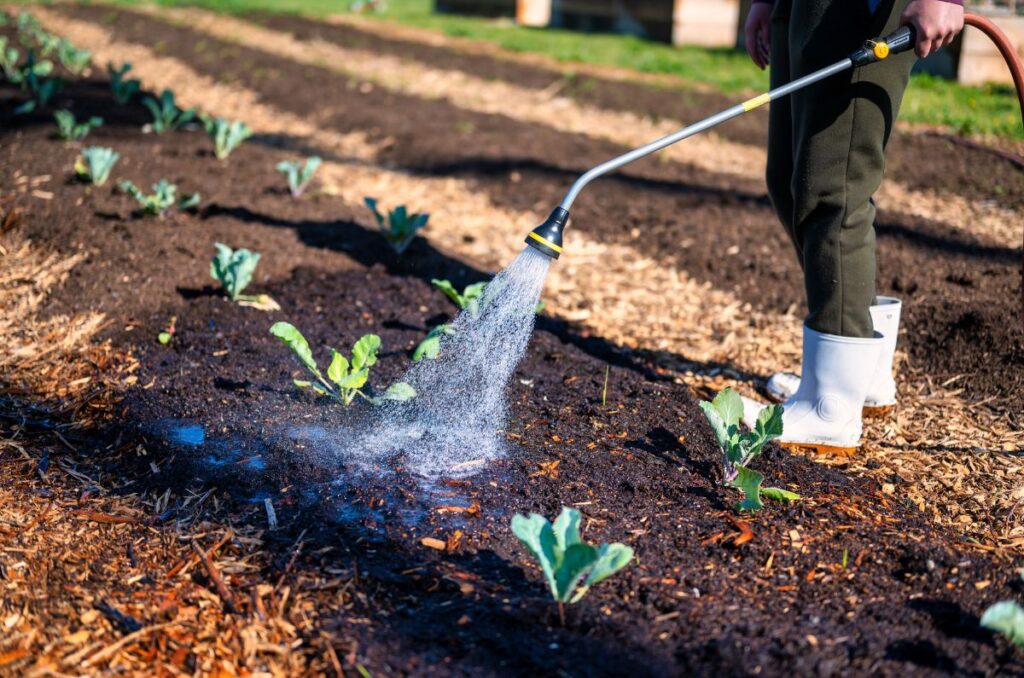
How Much Water?
Aim to provide about one inch of water per week, whether through rainfall or manual watering. This is the most widely recommended amount of water for most vegetables, although individual varieties may vary.
But there is no way that we can meet the watering needs of each different variety. Yes, we water our peppers differently than lettuce, but beyond that is not reasonable.
For example, fruiting plants like cucumbers and tomatoes require much more water than something like potatoes after they are mature. That is because most fruits are over 90% water and the leaves of these plants are much larger, meaning they require more water.
The amount of water needed to produce such a large plant would surprise you, so keep them hydrated!
How Often Should I Water?
You’ll need to understand for your own garden how often you should water.
I like to water everything about twice a week, depending on how hot and windy it gets. This is easy for me to keep track of and gives the plants the right amount of water.
Some plants I will give an additional watering throughout the week, such as lettuce or brassicas. These plants have shallow roots and don’t do well in the heat.
You don’t want to water too often. If you give your plants water very often, they won’t grow strong roots to go looking for water, they’ll just remain close to the surface.
If you have very sandy soil, you will probably have to water more often. If you have very clay-heavy soil, you’ll probably be watering less.
Additionally, if you live in a very hot climate, you may have to water more often because of the water lost to evaporation.
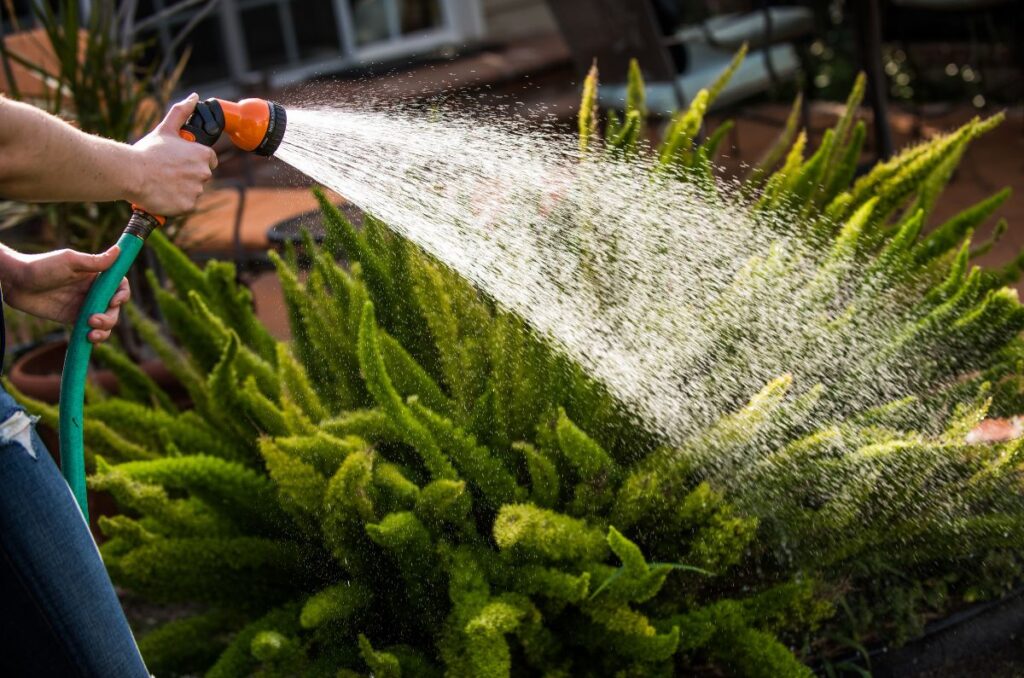
Water the Roots, Not the Leaves
I know that we have all done this before: watering the leaves of the plants thinking that it’s the same. That is actually totally wrong. So much water is wasted when doing this.
While plants can absorb water through their leaves, it is extremely inefficient and can cause more harm than good.
When we water from a high spot, it can splash soil onto the leaves and cause diseases to spread. This will reduce the health of your garden and decrease your yields.
It also wastes water by putting more on the leaves and in the air than at the actual roots.
Instead, put your hose right at the base of your plants and water from there. Don’t splash the leaves, just water the roots. This will help to conserve water, reduce diseases, and give your plants the right amount of water.
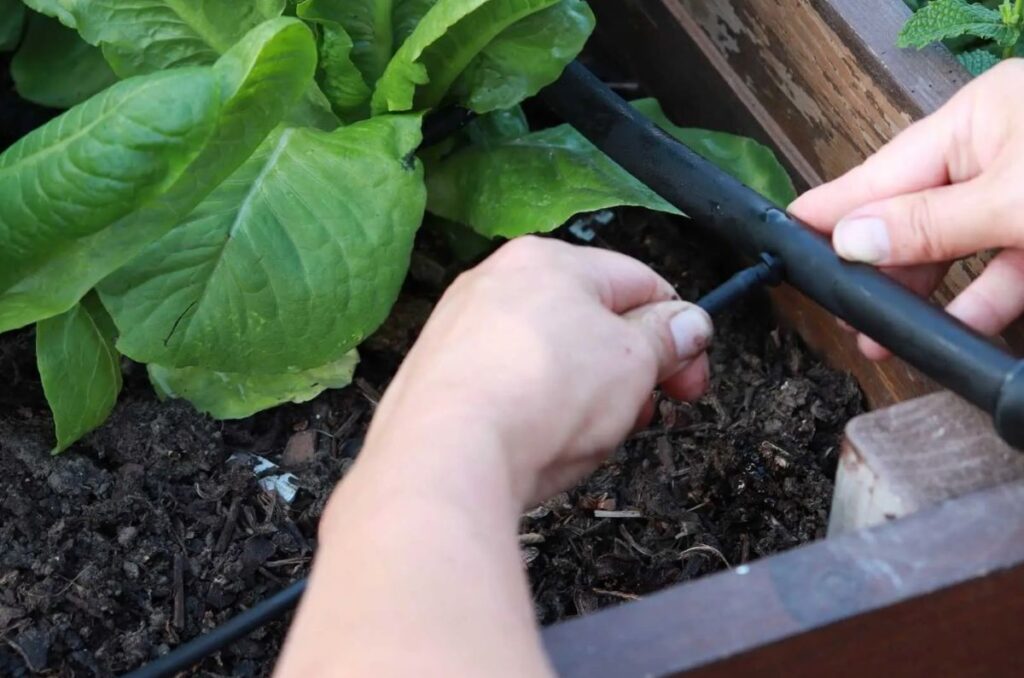
Watering Techniques for Vegetables
Different plants can benefit from different watering strategies. Here are a few to get you started:
- Drip Irrigation: Highly efficient and conserves water by targeting specific areas. It consists of a supply line, filter, and pressure regulator feeding drip tape, tubes, or single emitters in order to distribute a specific amount of water to an exact location in your garden. This drip irrigation kit from Bootstrap Farmer contains everything you need to get started.
- Soaker Hoses: Perfect for thoroughly watering along garden beds. These differ from drip irrigation in that they have thousands of holes along their surface for a less targeted and more broad application. This would be used, for example, to water a newly-planted vegetable bed.
- Hand Watering: This allows for precise control and interaction with your plants. Hand watering forces you to go outside and observe what’s going on in the garden, which is why I like it so much. You can use a watering can or you can use this retractable hose reel from Giraffe Tools.
Tools for Efficient Garden Watering
Always invest in high-quality watering tools. These will perform better and last much longer than cheap tools:
- Watering Can: Ideal for smaller gardens and precise watering. Find a good quality, stainless steel watering can that will last you a long time. Additionally, make sure it can hold at least a gallon of water in it, just so that you won’t have to go back and forth from the hose as often.
- Garden Hose with Adjustable Nozzle: This hose increases efficiency for larger areas. Giraffe Tools specializes in retractable hose reels, meaning you won’t have to deal with winding and unwinding the hose every single time. Giraffe Tools gets rid of the kinking, ripping, and other winding problems.
- Automatic Timers: Great for following a set watering schedule, especially when you’re on vacation. For example, in the hottest parts of the summer it may be good for you to water every Monday and Friday at 6 am. Additionally, this automatic timer from Bootstrap Farmer allows you to water for up to 240 minutes at one time.
Why You Should Mulch Your Vegetables
Mulch is a layer of organic matter that is spread on the surface of the soil. It could be leaves, grass clippings, or woodchips.
Because mulch is on top of your soil, it acts as a protective layer that blocks out sunlight and reduces evaporation.
Additionally, lighter-coloured mulches can reflect light from your soil. This will help to reduce the temperature of the soil and reduce evaporation further.
The best mulch for you to use is anything that is available. For some that may be fallen leaves, cardboard, or woodchips.
If you want to buy a mulch, consider using straw. Straw mulch is widely available and is the lightest mulch in colour. This will help to reflect more sunlight and reduce evaporation.
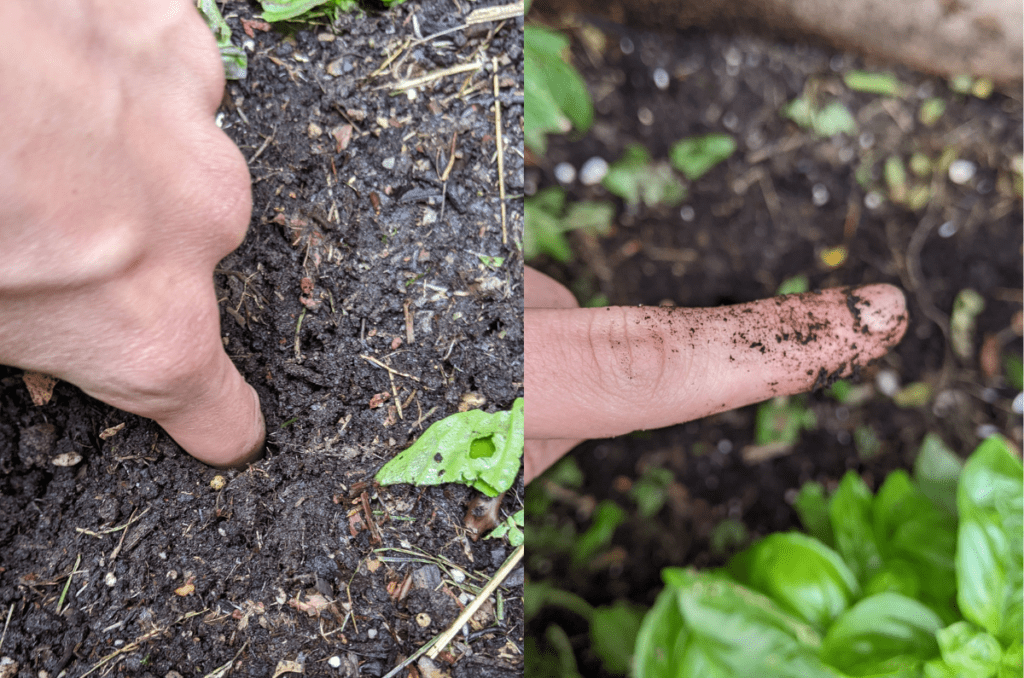
Signs of Proper Watering
Here’s what to look for to make sure your plants are getting the right amount of water:
- Healthy Growth: You should be seeing strong stems and vibrant foliage. Your plants should be growing vigorously.
- Resilience to Stress: Make sure your plants are able to bounce back from stress. The midday heat may cause your plants to wilt. This is actually a normal reaction that helps them survive. Don’t water right when you see wilting. Instead, wait until the heat passes and see if the leaves come back up. If they do, great! If they are still wilted after the sun has passed, give them some water.
- Knuckle Test: Check that the soil is damp about an inch below the surface. To do this, poke your finger into the soil up to your second knuckle. If your finger tip is moist this deep, don’t water yet. If your finger tip is bone dry, it would be a good idea to give your plants some water.
Water Conservation Tips
While watering your garden is crucial, it’s also important to conserve water whenever possible. Here are some tips for doing that:
- Use Rain Barrels: You can harvest rainwater and use it for your garden. This involves placing rain barrels where water is normally drained from your roof. Connect your hose to the barrel and water as usual. This is especially important for water-stressed areas of the world where there may actually be restrictions on using city water for your garden.
- Water in Zones: Different areas of our gardens receive different amounts of sunlight. Some are more shady, some are more sunny. The sunny areas are generally going to need more water than the shady areas.
- Group Plants by Water Needs: For example, cucumbers and pumpkins have similar watering needs and will benefit from being planted near each other. This will reduce water waste by ensuring each plant gets just what it needs.
Discussion Questions:
- What is your watering schedule like? Do you like to hand water or do you have an automatic system set up for your vegetables?
Let us know in the comment section below!
Frequently Asked Questions
Most plants will benefit from receiving about 1 to 2 inches of water per week. That doesn’t necessarily mean that you only water once a week. You could water 2 times a week, which totals up to 1 to 2 inches.
Early morning is the best time to water the garden, as this is before the real heat of day sets in. Watering at this time will ensure that your plants receive enough watering before getting scorched by the sun.
The most effective method for watering your garden is to use drip irrigation. Drip irrigation is targeted and automatic, meaning you can think less about garden watering. That being said, it may also help to save water.
Generally speaking, underwatering a plant causes less damage than overwatering. This is because it is hard to recover from overwatering, while underwatering can be fixed by, well, water. So if you’re in doubt, don’t water your plants and see if they wilt after.
Even More Gardening Ideas
Here are a few more posts to get the ball rolling in your garden!
- 10 Most Fragrant Flowers for Your Garden
- How to Grow Peppers this Summer
- The Best Raised Beds for Growing Vegetables
If you enjoyed this article, make sure to share it with your friends and family members who are also looking to improve their gardening skills. Also, consider signing up for our email newsletter; don’t worry, we won’t spam you, just fresh gardening tips and tricks every week!
If you want to learn more about gardening, foraging, and nature, check out The Real Gardener on LinkedIn, YouTube, and Pinterest.
Pin this post for later:
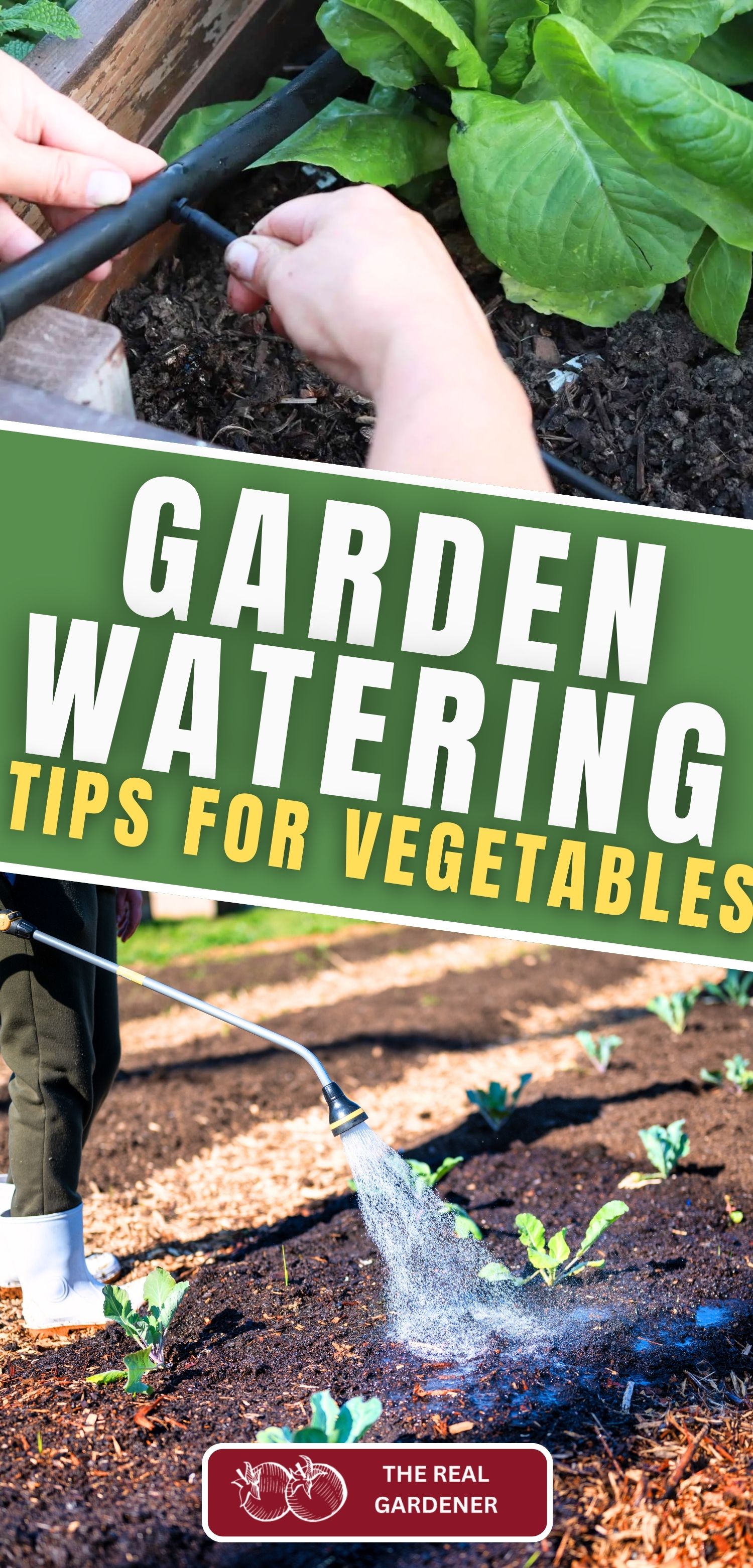
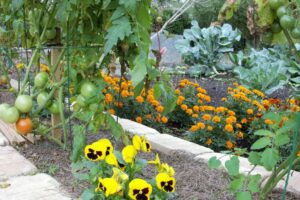
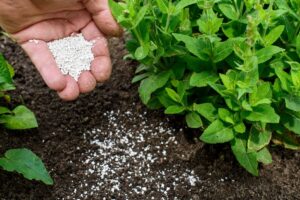
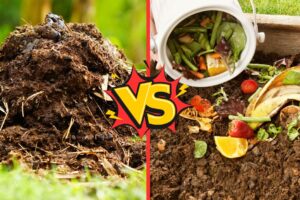
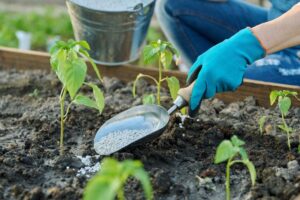
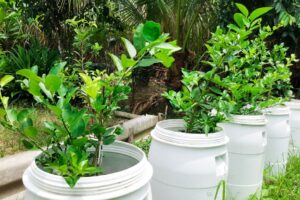


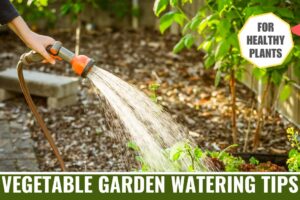
Leave a Reply